
A widespread famine affected Ethiopia from 1983 to 1985. The worst famine to hit the country in a century, it affected 7.75 million people and left approximately 300,000 to 1.2 million dead. 2.5 million people were internally displaced whereas 410,000 refugees left Ethiopia. Almost 200,000 children were orphaned.

The Tigray Region is the northernmost regional state in Ethiopia. The Tigray Region is the homeland of the Tigrayan, Irob and Kunama people. Its capital and largest city is Mekelle. Tigray is the fifth-largest by area, the fourth-most populous, and the fifth-most densely populated of the 11 regional states.
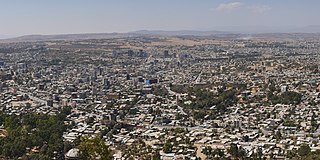
Mekelle, or Mek'ele, is a special zone and capital of the Tigray Region of Ethiopia. Mekelle was formerly the capital of Enderta awraja in Tigray. It is located around 780 kilometres (480 mi) north of the Ethiopian capital Addis Ababa, with an elevation of 2,254 metres (7,395 ft) above sea level. Administratively, Mekelle is considered a Special Zone, which is divided into seven sub-cities. It is the economic, cultural, and political hub of northern Ethiopia.

Shire, also known as Shire Inda Selassie, is a city and separate woreda in the Tigray Region of Ethiopia. The city is the administrative center of the Shire Awraja, Mi erabawi Zoba and now Semien Mi'irabawi Zone. It was part of Tahtay Koraro district.
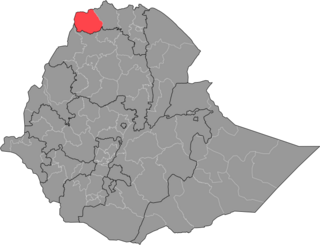
The Western Zone is a zone in the Tigray Region of Ethiopia. It is subdivided into three woredas (districts); from north to south they are Kafta Humera, Welkait and Tsegede. The largest town is Humera. The Western Zone is bordered on the east by the North Western Zone, the south by the Amhara Region, the west by Sudan and on the north by Eritrea. Starting from the late 17th C., internal boundaries are clearly shown, with 37 maps displaying a boundary that is located well south of the Tekeze River, or even south of the Simien mountains. Welkait is explicitly included within a larger Tigray confederation ; it is briefly mapped as part of Amhara in 1891–1894 and part of Gondar from 1944 to 1990. At other periods it appears independent or part of a larger Mezaga lowland region.
Events of 2020 in Ethiopia.

The Tigray war was an armed conflict that lasted from 3 November 2020 to 3 November 2022. It was a civil war that was primarily fought in the Tigray Region of Ethiopia between forces allied to the Ethiopian federal government and Eritrea on one side, and the Tigray People's Liberation Front (TPLF) on the other.
The spillover of the Tigray War has had an impact on other countries in the surrounding region, particularly in Sudan. This spillover mainly consisted of Ethiopian refugees, more than 50,000 of which have crossed the Ethiopia–Sudan border. There have also been border clashes, mostly between the Sudanese Armed Forces and Ethiopian militias, but the Sudanese government has also claimed ambushes by the Ethiopian National Defense Force have taken place. Most of the fighting centered in Al-Fashaqa, a fertile plain claimed by both Sudan and Ethiopia.

Casualties of the Tigray War refers to the civilian and military deaths and injuries in the Tigray War that started in November 2020, in which rape and other sexual violence are also widespread. Precise casualty figures are uncertain. According to researchers at Ghent University in Belgium, as many as 600,000 people had died as a result of war-related violence and famine by late 2022. The scale of the death and destruction led The New York Times to describe it in November 2022 as "one of the world’s bloodiest contemporary conflicts."
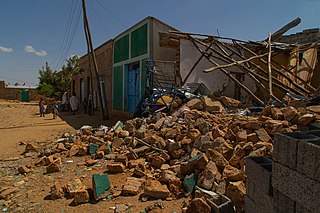
All sides of the Tigray war have been repeatedly accused of committing war crimes since it began in November 2020. In particular, the Ethiopian federal government, the State of Eritrea, the Tigray People's Liberation Front (TPLF) and Amhara Special Forces (ASF) have been the subject of numerous reports of both war crimes and crimes against humanity.
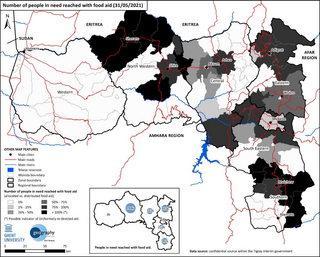
Beginning with the onset of the Tigray War in November 2020, acute food shortages leading to death and starvation became widespread in northern Ethiopia, and the Tigray, Afar and Amhara Regions in particular. As of August 2022, there are 13 million people facing acute food insecurity, and an estimated 150,000–200,000 had died of starvation by March 2022. In the Tigray Region alone, 89% of people are in need of food aid, with those facing severe hunger reaching up to 47%. In a report published in June 2021, over 350,000 people were already experiencing catastrophic famine conditions. It is the worst famine to happen in East Africa since 2011–2012.
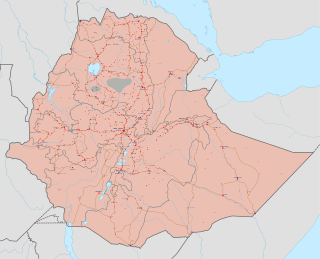
The ongoing Ethiopian civil conflict began with the 2018 dissolution of the Ethiopian People's Revolutionary Democratic Front (ERPDF), an ethnic federalist, dominant party political coalition. After the 20-year border conflict between Ethiopia and Eritrea, a decade of internal tensions, two years of protests, and a state of emergency, Hailemariam Desalegn resigned on 15 February 2018 as prime minister and EPRDF chairman, and there were hopes of peace under his successor Abiy Ahmed. However, war broke out in the Tigray Region, with resurgent regional and ethnic factional attacks throughout Ethiopia. The civil wars caused substantial human rights violations, war crimes, and extrajudicial killings.

The Togoga airstrike was an airstrike by the Ethiopian Air Force on the town of Togoga in the Tigray Region of Ethiopia, on a market day, during the Tigray War, on 22 June 2021. 64 people were killed and 180 others were injured.

Kemise is a town and administrative seat of the Oromia Zone in the Amhara Region, Ethiopia. Kemise is 224 kilometres (139 mi) northeast of the Ethiopian capital, Addis Ababa and has a latitude and longitude of 10°43′N39°52′E with an elevation of 1424 meters above sea level. It was part of the former Chaffa Gola Dewerahmedo district and is now surrounded by the Dawa Chaffa district.
This Timeline of the Tigray War is part of a chronology of the military engagements of the Tigray War, a civil war that began in the Tigray Region of Ethiopia in early November 2020.
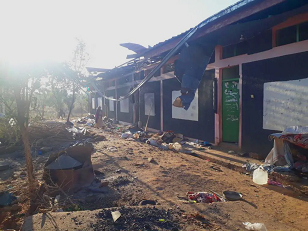
In the late hours of 7 January 2022, the Ethiopian Air Force (ETAF) carried out an airstrike on a camp for internally displaced persons (IDP) set up in Dedebit Elementary School, located in the Tigray Region of Ethiopia. Between 56 and 59 people were killed in the attack, and at least 30 others were left injured.

Since the 1990s, the Amhara people of Ethiopia have been subject to ethnic violence, including massacres by Tigrayan, Oromo and Gumuz ethnic groups among others, which some have characterized as a genocide. Large-scale killings and grave human rights violations followed the implementation of the ethnic-federalist system in the country. In most of the cases, the mass murders were silent with perpetrators from various ethno-militant groups—from TPLF/TDF, OLF–OLA, and Gumuz armed groups.
On 4 October 2022, the Ethiopian National Defense Force launched an airstrike at a school housing internally displaced people in the town of Adi Daero in La'ilay Adiyabo, killing more than 50 and injuring at least 70 others. According to Tigrayan authorities and some witnesses the death toll was at least 65. The attack is one of the deadliest in the Tigray War.
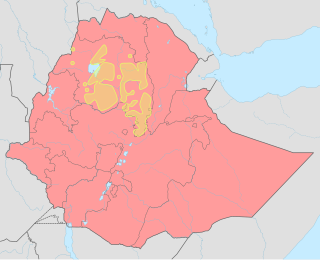
The War in Amhara is an armed conflict and insurgency in the Amhara Region of Ethiopia that began in April 2023 between the Fano militia and the Ethiopian government. The conflict started after the government attempted to dissolve the Amhara Special Forces and other regional forces to "promote national unity." This move led to protests and armed resistance by local forces under Fano.















